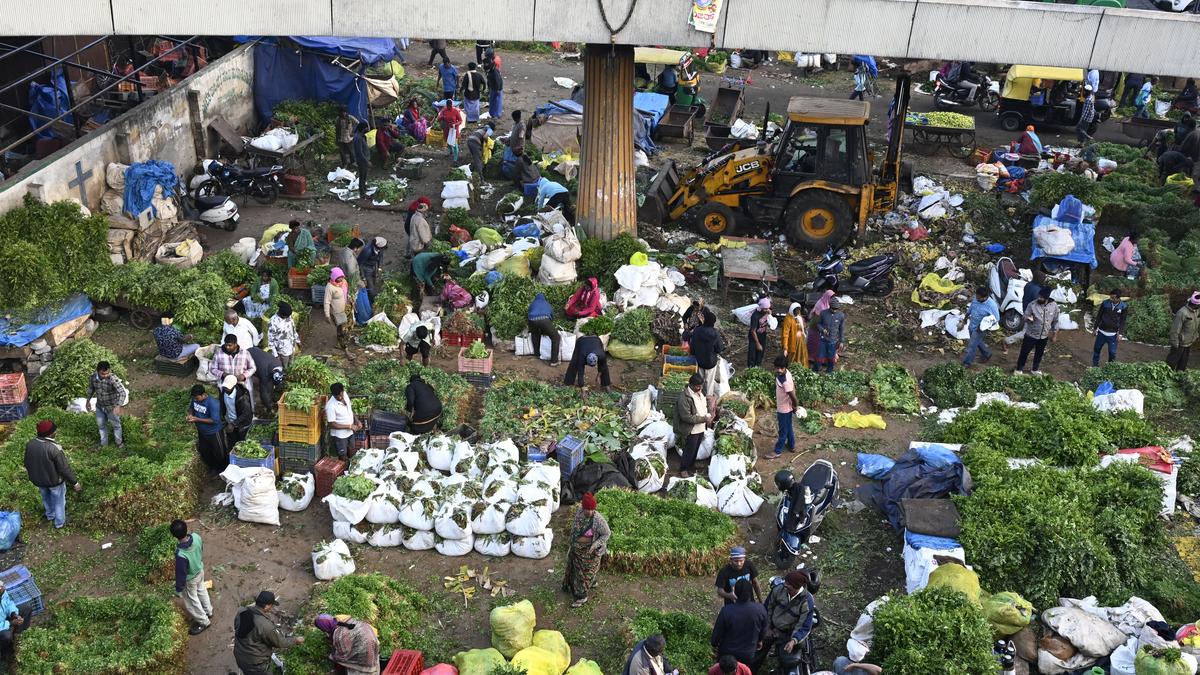
Balancing livelihood and urban chaos
The Hindu
Bengaluru street vendors face challenges and opportunities, impacting residents, businesses, and the urban economy.
John Peter sells helium and foil balloons ranging from ₹10 to ₹600 every day. He begins his day in Jayanagar, and as the day progresses, he travels to different parts of the city. “I go to busy marketplaces like K.R. Market, Chickpet, Shivajinagar, and Majestic. I also linger around schools. Mostly, I travel by bus, but if it’s late or the load is heavy, I take an auto. I typically earn ₹500-1,000 per day. I stay out until about 9 p.m. and then head home. Buses are harder to get after 9,” he said.
From bustling markets to quiet residential areas, street vendors/hawkers who sell everything from stationery to clothing to imitation jewellery, food items, fruits and vegetables are found everywhere in Bengaluru. According to the 2017 survey of the Bruhat Bengaluru Mahanagara Palike (BBMP), there were 25,000 street vendors in Bengaluru. The number might have crossed a lakh in the post-pandemic era, according to the vendors themselves.
The city’s residents and permanent business owners all have their own love-hate relationships with these street vendors, primarily due to the unorganised nature of this economy. People prefer to shop for certain items from these vendors due to easy availability and affordability but find it problematic when their walking or parking space is taken away by the same vendors.
“When I was in college, I used to love going to Sampige Road (in Malleswaram) for my shopping as I would get things for cheaper rates from street vendors. But now, when I take a walk on the same road during weekends or festivals, it is difficult to keep one step in front of the other as the vendors have taken up all the space on the footpath with their shops. The prices are not cheap like before either,” said Ankitha Sharma, a copywriter from Bengaluru.
On the other hand, a street vendor can make around ₹10,000 to ₹1 lakh a month depending on what they are selling and the location they are selling in, according to vendors themselves, but most of them work without basic facilities like shelter, godowns, washrooms and drinking water. They also say they face a plethora of problems daily, including eviction and corruption, which also sometimes lead to loss of business.
“We are also constantly under the threat of eviction from both the police and the BBMP. In central areas like Market, Majestic and Malleswaram, bribes have to be paid to multiple agencies and local goondas,” claimed S. Babu, president of Bengaluru Urban District Street Vendors’ Federation.
In Shivajinagar, which is known for its bustling market areas like Russell Market and Commercial Street, most street vendors say that they are being evicted constantly. Saleem Ahmed and Syed Ahmed, street vendors who sell cosmetics and stationery, said, “Recently, the police have been chasing us away every day. We come back after they leave and continue with our work.”













